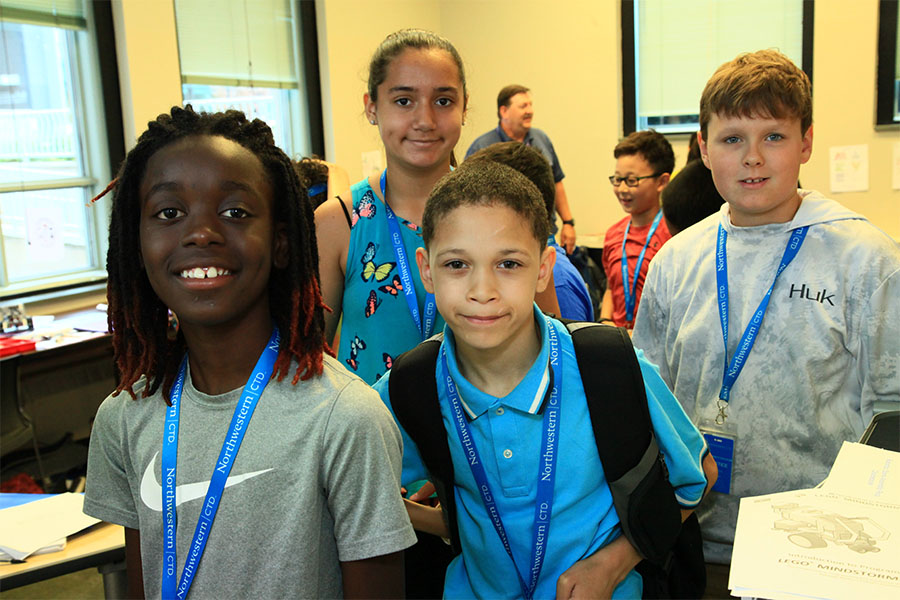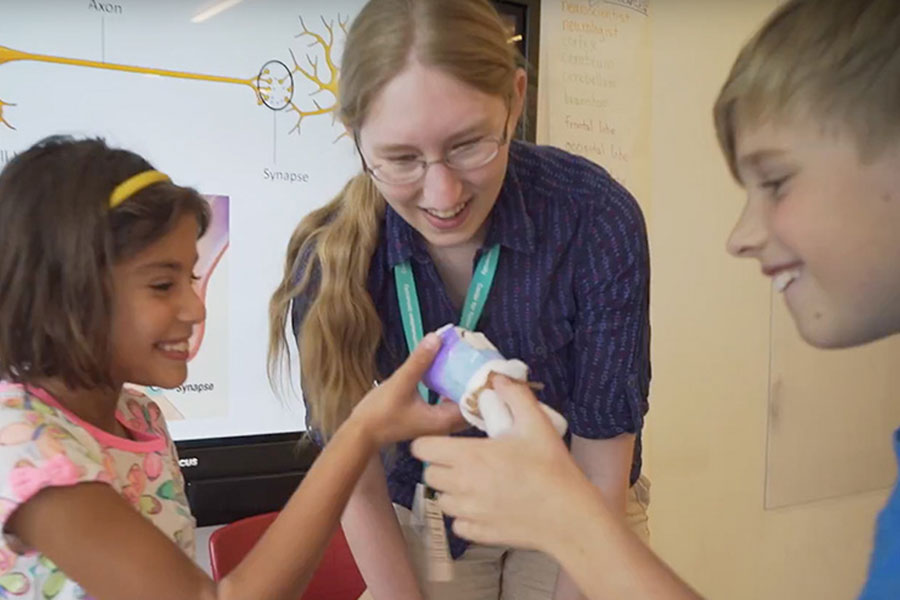Powered by Gifted Girls
Vicky Blanas and Amy Gyarmathy have been program coordinators at the Center for Talent Development (CTD) for the past five years. Prior to coming to Northwestern, they were both high school teachers. They also both have daughters in middle school, and when it came to their attention that the number of girls participating in tech-based classes decreased as they reached middle school, they decided to look into why, and what CTD could do to reverse this trend. Despite the fact that CTD is offering more tech-based classes than ever before (105 courses in 2010--an 855% increase from 2005!), the number of female participants remains under 30%.  Additionally, while CTD tech-based courses were inciting more elementary-aged girls to participate, the numbers still fell dramatically in the middle school and high school years.
Additionally, while CTD tech-based courses were inciting more elementary-aged girls to participate, the numbers still fell dramatically in the middle school and high school years.
Participation in tech-based courses in grades 2 through 12.
Blanas and Gyarmathy examined current research in the field, surveyed former and current students who have taken computer tech classes, interviewed CTD tech teachers and teaching assistants, and created a homogeneous summer course to compare with a heterogeneous course. Much of the research out there echoed what was being observed in CTD tech classes; as girls got older, they tended to drop out of tech classes. Even at the university level, where many women entering computer science programs were not actually graduating from them. Study after study has reported that women think differently, and that this has a direct impact on what appeals to them in terms of learning. This is particularly true when it comes to any field where the work is rather isolating, as much of science can be, unless these differences are acknowledged and addressed. The University of Pennsylvania, in an attempt to address the issues, revamped its entire Department of Computer and Information Science. Using the current understanding that women possess larger limbic systems and therefore more driven by emotions, the University altered its introductory computer science courses to provide more support, assigned freshmen to a core group of faculty advisors that meet regularly in both academic and social settings, provided more faculty support for summer research projects, and peer mentoring that included special attention to partnering up women with each other. Pennsylvania’s success—a jump from a 50% retention rate of female Computer Science majors in 2003 to an 85% retention rate in 2005 and subsequent years—encouraged CTD to put into place a programming class for girls in the summer program. “Animation Station: An Introduction to Computer Animation” (a standard mixed-gender offering) and “Girl Power Animation” (an offering for females) were one-week courses offered in the summer of 2010. The curriculum and instructor were the same. The response was overwhelmingly positive. While there were only three girls in the heterogeneous class, there were 15 in the homogeneous class. The instructor found that the class progressed faster and created more evolved, complex projects. He noted that the girls’ work contained more dialog, and that the girls often chose to work in pairs or groups rather than alone. Parents reported to like the course option for girls as well. Most reported that though their daughter would have considered taking the heterogeneous class, the girls-only aspect greatly appealed to them.
- My daughter, L, took the Girl Power Animation class and she really enjoyed it. I think she would consider taking future technology classes based on her experience in this class.
- Please do encourage CTD to offer more girls-only classes especially in science and technology subjects. E really did enjoy the class. The girls-only aspect of the class was a true plus for her.
- My daughter specifically wanted to do an all girl class. It did work better for our schedule as well, but she was excited about doing this class. She had lots of fun and made friends in the class. The girls were able to animate girl things, whereas I would imagine that the projects would have turned out differently if it were a mixed class.
As for the girls themselves, Blanas and Gyarmathy remain convinced that they just want to have fun. As technology becomes more social (á la Facebook and Twitter), and more girls are exposed to technology at a young age, the expectation is that more females will be drawn to what the technology can do for them. In the meantime, CTD has committed to paying close attention to how technology course descriptions are worded, to offer additional homogeneous course options, and to recruit more female technology instructors. Studies on learning differences between men and women: http://isites.harvard.edu/fs/html/icb.topic58474/krupnick.html http://www.aare.edu.au/05pap/fer05090.pdf http://www.sfn.org/index.aspx?pagename=news_102404d http://www.scientificamerican.com/article.cfm?id=girl-brain-boy-brain


